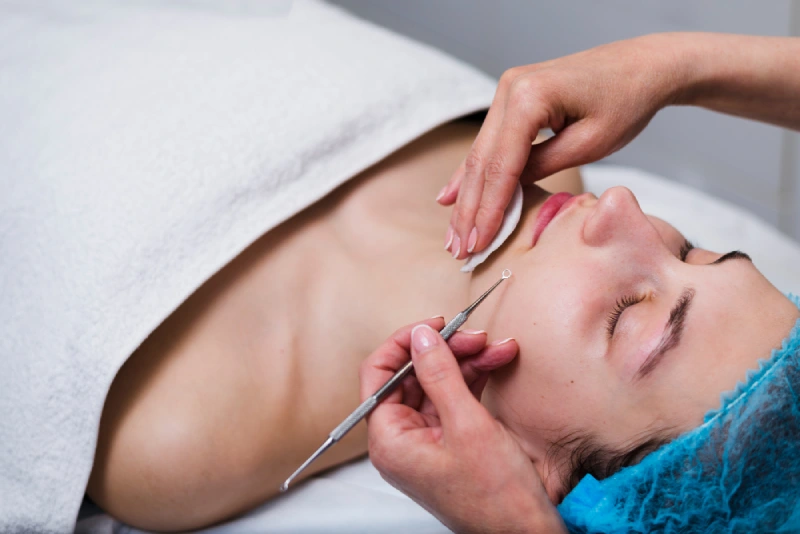Regular microneedling can improve the tone and texture of your skin and can minimize the appearance of wrinkles and scars. Read on to learn how this simple procedure can improve the health and appearance of your skin.
What is Microneedling?
Microneedling (aka collagen induction therapy) is a procedure where your dermatologist or aesthetician uses a handheld pen-shaped device with multiple thin needles attached to rapidly puncture holes in the top layers of your skin. The needles enter the skin at a depth of 0.5-3.5 mm, depending on the skin concern being treated.
Using needles to make holes in your skin might sound scary, but with numbing cream the procedure is quite comfortable. The needles are so thin that the shallow channels created in your skin close within 4 hours of treatment.
Microneedling creates controlled injury to the skin which stimulates the production of new collagen and elastin as it heals. Over time, the skin becomes stronger, smoother, and clearer.
Benefits of Microneedling
- Reduces fine lines and wrinkles
- Improves the appearance of scars
- Minimizes hyperpigmentation and sun damage
- Improves the delivery of topical treatments and acne medications
- Refines the appearance of large pores
- Reduces the appearance of stretch marks
- Improves skin elasticity
- Proven to improve skin redness associated with rosacea
- Can stimulate hair growth
Risks of Microneedling
Microneedling is considered a minimally invasive procedure with few risks. Whenever the surface of the skin is compromised there is a small chance of infection. However, if your microneedling is performed by a professional in a clinical setting this risk is minimal.
Not everyone is an ideal candidate for microneedling. If you have active acne, eczema, psoriasis, a bleeding or clotting disorder, immune disease, are on certain medications, or tend to develop keloid scars, you should discuss if microneedling is an appropriate treatment for you with your dermatologist.
How Exactly Does It Work?
Your health care provider will cleanse and apply numbing cream to the area to be treated. Once numb, microneedling will begin. Usually, the needles will be applied at a depth of 0.5-1mm deep, depending on the thickness of your skin and the area being treated.
If you have deep scars or stretch marks, your doctor will increase the needle depth up to 3.5 mm as needed. The deeper the needle goes, the more likely it is that you’ll experience some minor bleeding. Deeper microneedling such as this should only be done under the care of a dermatology professional to reduce your risk of injury or infection.
Your microneedling session will generally take around 30 minutes. It is a quick and easy procedure with minimal to no downtime. Your skin may be red or peel slightly in the days following the procedure. Rarely, you might experience some mild bruising.
What’s the Aftercare?
Immediately after microneedling your skin is highly receptive to topical treatments. Hyaluronic acid, peptides, and growth factors can be applied right after microneedling to nourish your skin and help stimulate collagen growth. Vitamin C can be applied to target hyperpigmentation.
Avoid harsh actives for a few days after your microneedling treatment. Use gentle cleansers and hold off on using retinol, benzoyl peroxide, AHA’s, and BHA’s for at least 48 hours.
When Will I See Results?
You will need multiple microneedling sessions to see the best results. Often people will have 3 to 6 sessions spaced out every 4 to 6 weeks. The more microneedling you do, the more collagen and elastin you build, and the better your results will be.
The number of sessions you will need to address your concerns depends on your age, the condition of your skin, and how your body uniquely responds to microneedling.
In Summary
Microneedling is a minimally invasive and highly effective treatment for numerous skin concerns. Regular microneedling can improve the appearance and vitality of your skin.
Perhaps microneedling sounds like a procedure you’d like to add to your skincare toolkit. Discuss it with your dermatologist or aesthetician to see if it’s the right choice for you.





